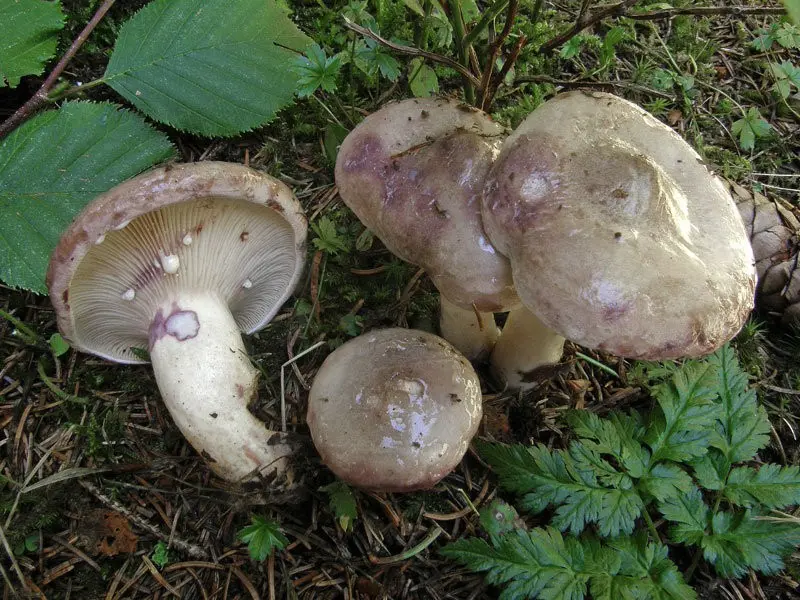Contents
Wet milkweed (Lactarius uvidus)
- Division: Basidiomycota (Basidiomycetes)
- Subdivision: Agaricomycotina (Agaricomycetes)
- Class: Agaricomycetes (Agaricomycetes)
- Subclass: Incertae sedis (of uncertain position)
- Order: Russulales (Russulovye)
- Family: Russulaceae (Russula)
- Genus: Lactarius (Milky)
- Type: Lactarius uvidus (Wet milkweed)
- Milky lilac (also called another species – Lactarius violascens);
- Gray lilac breast;
- Lactarius lividorescens;.

Wet milkweed (Lactarius uvidus) is a mushroom from the Milky genus, which is part of the Russula family.
External description of the fungus
The fruiting body of a wet lactifer consists of a stem and a cap. The height of the leg is 4-7 cm, and the thickness is 1-2 cm. Its shape is cylindrical, slightly expanding at the base. The structure at the foot is strong and durable, and the surface is sticky.
It is very rare to meet this type of mushroom, the color of the hat, which varies from grayish to gray-violet, can be called a distinctive feature. Its diameter is 4-8 cm, in young mushrooms it has a convex shape, which becomes prostrate over time. On the surface of the cap of old, mature mushrooms there is a depression, as well as a wide flattened tubercle. The edges of the cap are bordered with small villi and folded over. On top, the cap is covered with a grayish-steel skin, with a slight tint of purple. To the touch it is moist, sticky and smooth. This is especially true in humid climates. On the surface of the cap, vaguely expressed zonation sometimes appears.
The hymenophore of the fungus is represented by plates containing white spore powder. The plates themselves have a small width, are often located, slightly descend along the stem, are initially white in color, but turn yellow over time. When pressed and damaged, purple spots appear on the plates. The milky juice of the fungus is characterized by a white color, but under the influence of air it acquires a purple hue, its release is very abundant.
The structure of the mushroom pulp is spongy and tender. It does not have a characteristic and pungent odor, but the taste of the pulp is distinguished by its sharpness. In color, the pulp of the wet milkweed is white or slightly yellowish; if the structure of the fruiting body is damaged, a shade of purple is mixed with the main color.
Habitat and fruiting period
The fungus, called wet milkweed, grows singly or in small groups, found in forests of mixed and deciduous types. You can see this mushroom near birches and willows, the fruiting bodies of the sharp milky are often found in wet areas covered with moss. The fruiting season starts in August and continues throughout September.
Edibility
Some sources say that the wet milkweed (Lactarius uvidus) belongs to the category of conditionally edible mushrooms. In other encyclopedias, it is written that the mushroom has not been studied much, and, possibly, has a certain amount of toxic substances, it may be slightly poisonous. For this reason, it is not recommended to eat it.
Similar species, distinctive features from them
The only mushroom species similar to the wet milkweed is the purple milkweed (Lactarius violascens), which grows only in coniferous forests.









